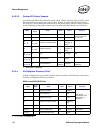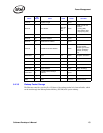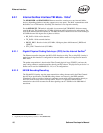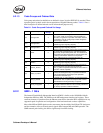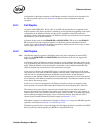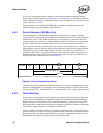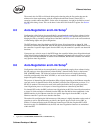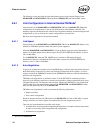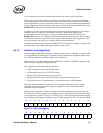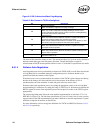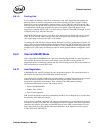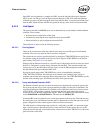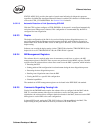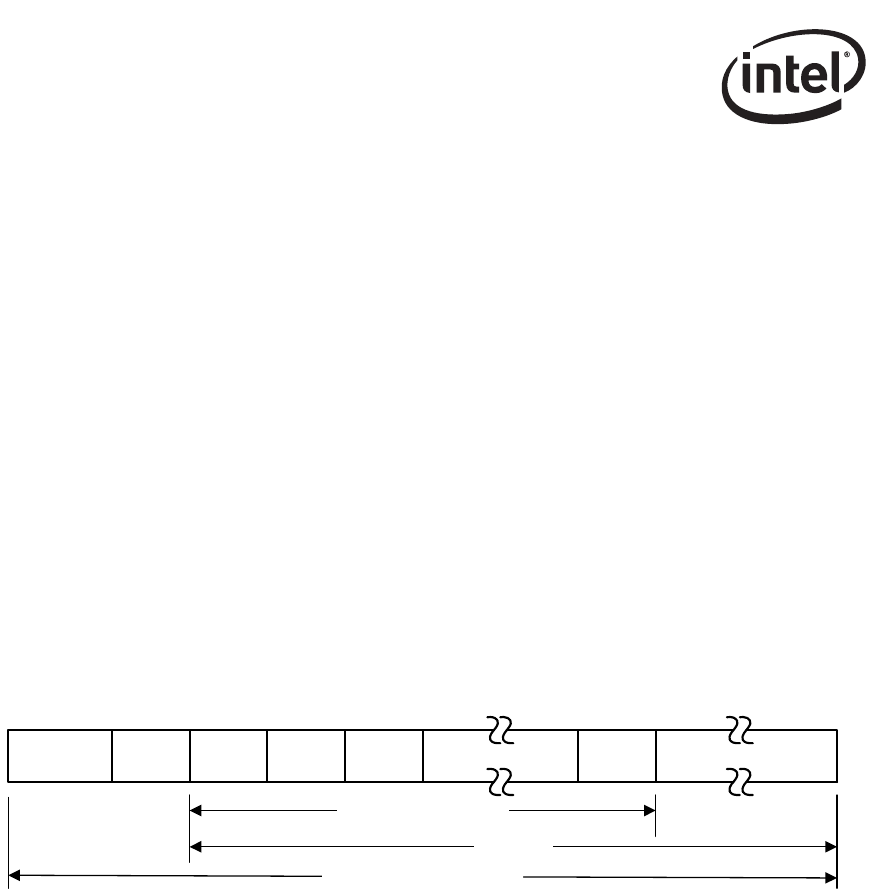
160 Software Developer’s Manual
Ethernet Interface
For receives, the Ethernet controller supports carrier extended packets and packets generated
during packet bursting operations (see Section 8.4.2.1 and Section 8.4.2.2). The Ethernet controller
can be configured to transmit in packet burst mode via the TCTL.PBE bit in the Transmit Control
register (see Section 13.4.46).
Carrier extension is only defined in the IEEE 802.3z standard for half-duplex operation for
operation frequencies above 100 Mb/s (Gigabit Ethernet).
8.4.2.1 Carrier Extension (1000 Mb/s Only)
One of the objectives of the IEEE 802.3z standard development was to support a maximum
collision domain of 200 m and retain the IEEE 802.3 Ethernet frame format. The scaling of the line
transfer rate by 10x to 1 Gb/s reduced the bit time by 10 and effectively reduced the theoretical
collision domain to an unusable size with the minimum packet size of 64 bytes. To overcome this,
the 802.3z specification development added the notion of carrier extension to the standard.
Carrier extension provides a method to increase the duration of the carrier event to a minimum
usable duration in order to meet the collision domain objective. Packets that are signaled from the
CSMA/CD layer that do not meet the minimum slot time of 512 bytes have extension bytes
appended to them in order to meet this minimum slot time requirement. The extension bytes are
defined within the context of the frame encapsulation discussion of the 802.3z standard and are
recognized by 802.3z compliant devices (see Figure 8-1).
Figure 8-1. Carrier Extended Frame Format
The Ethernet controller supports the reception and transmission of carrier extended packets. Carrier
extension is implemented via specifying the collision distance parameter, COLD, in the Transmit
Control register (TCTL). Note that this field is evaluated whether in full- or half- duplex operation.
8.4.2.2 Packet Bursting
In an attempt to recover some of the lost overhead encountered with short duration packets using
carrier extension, the IEEE 802.3z standard incorporates the implementation of packet bursting.
Packet bursting is a mechanism that allows a transmitting device to “own-the-wire” for a longer
duration and “pack” extra packets in a burst without relinquishing ownership of the medium. A
burst length timer is implemented which allows the Ethernet controller to continue to send packets
until the timer expires (if packets are available for transmission).
In the case where a transmitting station has more than one packet to send, it can transmit the first
packet (extending to 512 bytes if necessary) and then begin the transmission of subsequent packets.
Packet transmission can continue until either there are no more packets ready for transmission, or
the burst timer has expired. The burst timer limit is specified as 8 KB.
D
u
r
a
t
i
o
n
o
f
C
a
r
r
i
e
r
E
v
e
n
t
Slot Time
Minimum Frame Size
Preamble SFD DA SA T/L FCSData/Pad Extension



